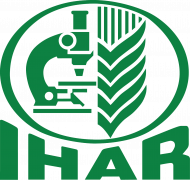Abstract
Fusarium semitectum is one of the important causal agents of dry rot of potato tubers in the world. In order to determine genetic variability among 41 isolates of F. semitectum, morphological and molecular studies were carried out. All F. semitectum isolates were recovered from infected potato tubers with dry rot symptoms collected from four provinces in Iran. According to macroscopic and microscopic characteristics, 41 isolates of F. semitectum were classified in two morphotypes (morphotypes I and II). All 41 isolates were evaluated for their pathogenicity on healthy potato tubers. Tuber rot symptoms were observed on the 21st day after inoculation of Fusarium isolates on the tubers tested. The measurement was done by comparing the depth and width of lesion expansion among the isolates. Molecular characterization through PCR-IGS-RFLP analysis by six restriction enzymes (AluI, BsuRI, Eco88I, MspI, TaqI and PstI) divided the 41 isolates of F. semitectum into two separated clusters that were in accordance with the morphological characterization.













